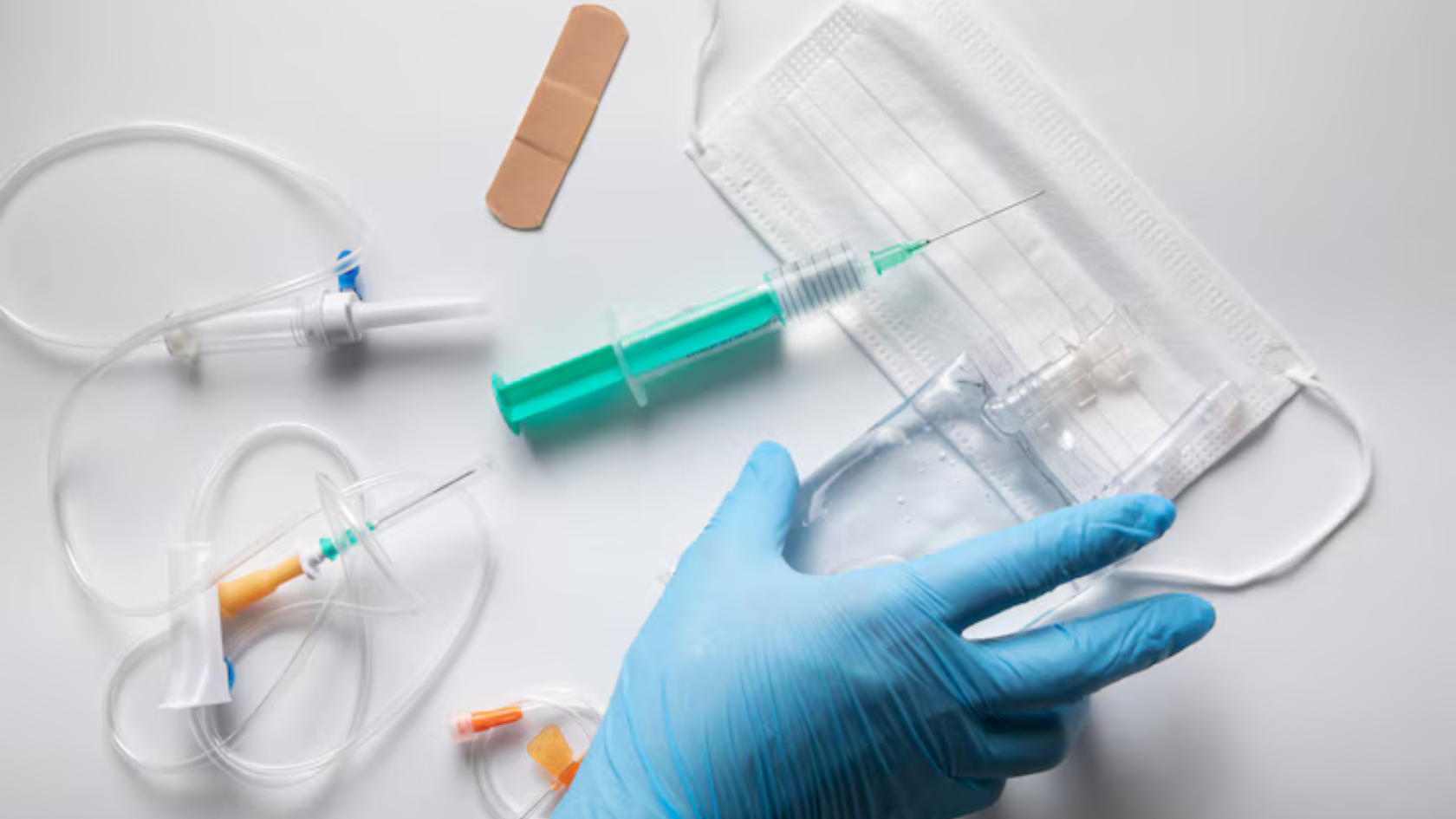A peripheral IV catheter is one of the most common tools used in medical settings today. It’s a small, flexible tube placed into a vein, usually in the arm or hand, to give patients medications, fluids, or nutrients quickly and safely. Often used in hospitals, outpatient clinics, and emergency settings, this device allows healthcare professionals to access the bloodstream without repeated needle sticks. It’s a short-term solution that supports many types of care, from hydration to administering antibiotics.
This tool plays a key role in modern IV therapy, especially in urgent or routine care. Nurses and trained healthcare providers insert it to ensure fast access to a vein for treatment. The catheter sits just beneath the skin in a peripheral vein, meaning one that is not in the chest or heart area. Its use helps avoid delays in care, making treatments more efficient and comfortable for the patient. Peripheral IV catheters are widely used for both adults and children and are considered safe when used correctly.
Key Takeaways
- Peripheral IV catheters are short, flexible tubes inserted into a vein to deliver fluids, medications, or nutrients directly into the bloodstream.
- These catheters are commonly used in hospitals for short-term treatments and emergency care due to their easy placement and quick access.
- The most frequent insertion sites include the hand, forearm, or foot—chosen based on comfort, vein accessibility, and patient-specific needs.
- Healthcare professionals monitor the site closely to prevent complications like phlebitis, infection, or catheter-related discomfort during use.
- Proper insertion, care, and timely removal of a peripheral IV catheter help reduce risks and ensure safe, effective treatment delivery.
Table of Contents
Understanding the Peripheral IV Catheter in IV Therapy
A peripheral IV catheter, also called a PIVC, is a thin, flexible tube that is inserted into a peripheral vein—usually in the arm, wrist, or hand. The catheter connects to tubing that delivers fluids, medications, or nutrition directly into the bloodstream. It is the most common type of intravenous access device used in short-term therapy and acute care settings.
Peripheral IV catheters are widely used in hospitals, clinics, and outpatient centers because they allow fast and efficient treatment without the need for repeated injections. Their size and placement make them ideal for temporary use, typically less than a week, and they are easy to remove once therapy ends. These catheters come in different sizes, measured in gauge (G). The most commonly used sizes range from 18G to 24G. Larger gauges allow faster fluid flow but are more suitable for adult veins. Smaller gauges are used for children or patients with smaller or fragile veins.
Choosing the right size depends on the treatment needs and the patient’s vein condition.
Insertion is typically done by a nurse or trained healthcare provider using a sterile technique. After cleaning the site, a needle is used to insert the catheter into the vein. Once placed correctly, the needle is removed, leaving just the soft plastic catheter inside the vein. It is then secured with medical tape or a dressing to prevent movement or dislodgement.
Peripheral IV catheters serve many medical purposes. They are used to deliver IV fluids to keep patients hydrated, provide pain medications, administer antibiotics, and deliver blood products when needed. These catheters are also essential during surgeries and emergencies, allowing immediate access to the bloodstream.
Proper care is essential to avoid complications like infection, swelling, or vein irritation (called phlebitis). Healthcare providers check the catheter site regularly to make sure it’s functioning properly and not causing discomfort. If a problem is spotted, the catheter is removed and replaced in a different vein.
In summary, a peripheral IV catheter is a basic but powerful tool that supports effective treatment in nearly every medical setting. Its role in IV therapy is vital, helping patients receive the care they need quickly and safely.
Uses, Benefits, and Care for Peripheral IV Catheters
Common Uses of Peripheral IV Catheters in Patient Care
Peripheral IV catheters are used to give treatments directly into the bloodstream. This includes fluids to prevent or treat dehydration, medications like antibiotics or pain relievers, and nutrients when a patient cannot eat or drink. In emergencies, they’re used to quickly deliver life-saving drugs. During surgeries, they give anesthesia and fluids to help maintain blood pressure. In short-term hospital stays, they offer a simple, fast way to support care.
In outpatient settings, like clinics or infusion centers, peripheral IV catheters are also used for chemotherapy, vitamin infusions, or iron treatments. For patients with mild to moderate illnesses, these catheters offer a reliable way to manage symptoms and speed up recovery.
Benefits of Peripheral IV Catheters
One of the biggest benefits is ease of use. Peripheral IV catheters are quick to insert and can be used right away. They help reduce the number of needle sticks a patient receives, improving comfort. For healthcare teams, these catheters are simple to maintain and monitor.
Another major advantage is flexibility. Since they’re used for short-term care, they can be easily changed or removed. This makes them ideal for temporary hospital stays or outpatient visits. Patients can move their arms more freely compared to other IV devices, making daily activities easier during treatment.
They’re also safer for short-term use compared to central lines, which have a higher risk of complications. While every IV carries some risk, the chances of serious problems are much lower with peripheral catheters when they are inserted and managed correctly.
Care and Maintenance of Peripheral IV Catheters
To avoid infection or other problems, the catheter site must be checked regularly. Nurses look for signs like redness, swelling, pain, or leaking fluid. If any of these symptoms appear, the catheter may need to be removed and replaced. The site is cleaned during dressing changes, and the area must remain dry and covered. Patients are usually told to avoid pulling or bumping the catheter, which can cause it to dislodge. If fluids are not flowing correctly, or if the IV pump alarms, a nurse may check the line to fix the issue.
Hospitals follow strict protocols for inserting and caring for IV catheters. This includes using sterile supplies and hand hygiene to lower the risk of infection. Patients are encouraged to speak up if they feel pain or notice any changes at the site. In many cases, a peripheral IV catheter is removed after 72 to 96 hours or sooner if no longer needed. If longer therapy is expected, a different type of IV access may be recommended.
Need Reliable IV Therapy Support?
Frequently Asked Questions
It’s used to deliver fluids, medications, and nutrients directly into the bloodstream.
It’s commonly placed in a vein in the hand, wrist, or arm.
Typically, it’s used for 3 to 4 days, but can vary based on the patient’s condition.
There may be brief discomfort, similar to a needle stick, but it passes quickly.
Yes, but the site should be kept dry and covered to avoid infection.
Redness, swelling, pain, or leakage at the site may indicate a problem.
Nurses or trained medical professionals insert the catheter using sterile techniques.
Minor risks include infection, vein irritation, or accidental dislodgement.
It may be checked, flushed, or replaced in another vein if needed.
Yes, smaller-sized catheters are available for pediatric use.

